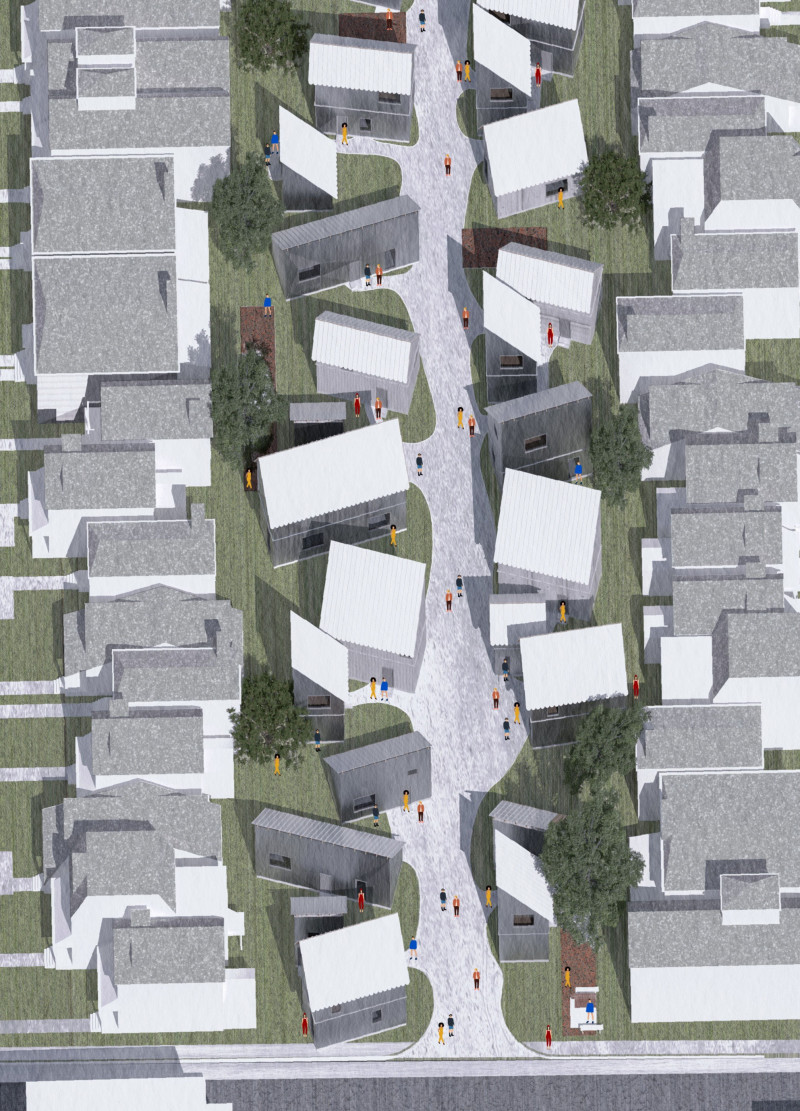5 key facts about this project
At its core, the project functions as an urban intervention aimed at addressing the challenges of affordable housing and community connectivity in a densely populated city. By tapping into the existing framework of laneways, the design prioritizes accessibility and encourages social interaction among the diverse groups of residents who may occupy these spaces. This focus on community living is a critical aspect of the design, promoting not just physical structures but also social cohesion and improved quality of life for inhabitants.
The design of the project integrates a range of architectural elements that facilitate both functionality and aesthetics. Each residential unit is envisioned as an "Accessory Dwelling Unit," which allows for modular construction that can be adapted to meet varying needs. This flexibility is essential in accommodating a diverse population, from individuals to small families, ensuring that urban living can be tailored to a variety of lifestyle choices.
Key components of the design include a network of interconnected laneways that serve as routes for pedestrian movement while creating opportunities for communal gathering. The layout emphasizes the importance of openness, with residential spaces that engage with their surroundings through large windows and accessible outdoor areas. Such design encourages interaction among residents and fosters a community spirit that traditional housing layouts often lack.
The materiality of the project reflects a careful selection aimed at sustainability and durability. Primary materials include wood for structural integrity and warmth, metal for roofing and cladding to provide a contemporary finish, concrete for foundational stability, and glass to bring in natural light and enhance the visual connection between indoor and outdoor spaces. This combination of materials not only contributes to the architectural aesthetic but also reinforces the project’s commitment to environmentally conscious building practices.
Unique design approaches within this project resonate deeply with the contemporary urban dilemma. The use of modular units empowers residents with the ability to make choices in their living situations, breaking away from conventional housing models. Additionally, the thoughtful integration of green spaces within the layout emphasizes ecological benefits while providing pockets of nature in the urban environment, which is often overlooked in dense cityscapes.
The architectural design outcomes of this project echo a larger vision for urban development in Toronto. The transformation of laneways into functioning parts of the community highlights the potential for increasing public engagement within the urban fabric and addressing housing demands effectively. By prioritizing shared spaces and promoting alternative living arrangements, the design not only serves its immediate purpose but sets a precedent for future initiatives that prioritize both community and sustainability in urban architecture.
For those interested in an in-depth exploration of the architectural plans, architectural sections, and detailed architectural designs, the project presentation offers valuable insights into the project's innovative concepts and execution. It invites readers to consider how these architectural ideas can contribute to a more connected and sustainable urban future.























